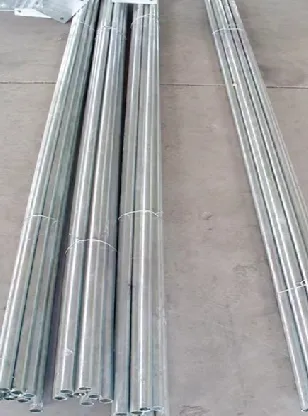loading...
- No. 9, Xingyuan South Street, Dongwaihuan Road, Zaoqiang County, Hengshui, Hebei, China
- admin@zjcomposites.com
- +86 15097380338
- Welcome to visit our website!
fiber reinforced polymer bars
Fiber Reinforced Polymer Bars Revolutionizing Construction
In recent years, the construction industry has been undergoing a transformative shift towards more innovative materials, with fiber reinforced polymer (FRP) bars emerging as a standout solution. These bars, made by embedding high-strength fibers within a polymer matrix, offer exceptional properties that make them an attractive alternative to traditional steel reinforcement bars (rebar). This article explores the benefits, applications, and future prospects of fiber reinforced polymer bars in the construction sector.
Understanding Fiber Reinforced Polymer Bars
Fiber reinforced polymer bars are composite materials that primarily consist of a polymer resin and reinforcing fibers. Common fibers include glass, carbon, and aramid, each contributing unique strengths and properties to the final product. The polymer matrix provides resistance to environmental degradation, while the fibers offer high tensile strength and stiffness. The combination of these materials results in bars that are significantly lighter than steel, while exhibiting excellent corrosion resistance.
Key Benefits of FRP Bars
1. Corrosion Resistance One of the most significant advantages of FRP bars is their resistance to corrosion. Unlike steel, which can succumb to rust and other forms of degradation in harsh environments, FRP bars maintain their integrity even in chloride-laden environments, such as coastal regions or applications involving de-icing salts. This property extends the life of structures, reducing maintenance costs and enhancing safety.
2. Lightweight and High Strength FRP bars are approximately one-fourth the weight of steel, making them easier to handle and install. This lightweight property not only reduces the overall weight of structures but also minimizes transportation costs. Additionally, FRP bars exhibit high tensile strength, making them suitable for applications requiring significant load-bearing capacities.
3. Non-Magnetic and Non-Conductive The non-magnetic nature of FRP bars makes them ideal for use in environments where electromagnetic interference must be minimized, such as in hospitals or sensitive electronic facilities. Furthermore, their non-conductive properties prevent issues related to electrical conductivity, making them safer in specific applications.
4. Enhanced Durability The durability of FRP bars contributes to the overall longevity of structures. They are resistant to a variety of chemicals, which makes them suitable for use in chemical processing plants and other aggressive environments. This enhanced durability translates into fewer repairs and increased lifecycle efficacy for infrastructure projects.
fiber reinforced polymer bars

Applications of FRP Bars
The versatility of fiber reinforced polymer bars has led to their adoption in various applications across the construction industry. They are used in the reinforcement of concrete structures, such as bridges, parking garages, and buildings, where corrosion resistance is paramount. Additionally, FRP bars find applications in seismic retrofitting, where their lightweight nature aids in bolstering structures against earthquakes without adding significant mass.
Another promising application is in the rehabilitation of existing structures. FRP bars can be externally bonded to concrete elements to enhance their load-bearing capacity and extend their service life. This method is particularly useful in restoring aging infrastructures, allowing for swift and effective repairs.
Challenges and Future Prospects
Despite the numerous benefits of FRP bars, challenges remain. Currently, the production cost of FRP materials is higher than that of conventional steel, which can deter their widespread adoption. However, as technology advances and production processes improve, it is anticipated that costs will decrease, making FRP bars more accessible to construction projects of all scales.
Furthermore, ongoing research is focused on enhancing the mechanical properties and fire resistance of these materials, which could pave the way for even broader applications. As sustainability becomes a crucial aspect of construction, FRP bars, with their long lifespans and reduced maintenance needs, align well with the pursuit of greener building practices.
Conclusion
Fiber reinforced polymer bars represent a significant advancement in construction materials, offering a combination of lightweight design, corrosion resistance, and high strength. As the industry continues to evolve, the potential of FRP bars to enhance structural integrity and longevity is promising. By overcoming existing challenges and promoting their benefits, FRP bars are poised to play a crucial role in the future of sustainable construction. With increased awareness and investment in this innovative material, the construction landscape is expected to see continued enhancements in performance and durability, ultimately shaping a more resilient built environment.
-
Transform Your Spaces with FRP Grating SolutionsNewsNov.04,2024
-
The Versatility and Strength of FRP RodsNewsNov.04,2024
-
The Excellence of Fiberglass Water TanksNewsNov.04,2024
-
The Benefits of FRP Grating for Your ProjectsNewsNov.04,2024
-
Elevate Your Efficiency with FRP Pressure VesselsNewsNov.04,2024
-
Welcome to the World of FRP Pressure VesselsNewsOct.12,2024
-
Unveiling the Future of Filtration: Why FRP Filter Vessels are a Game ChangerNewsOct.12,2024
